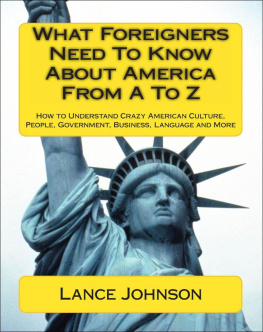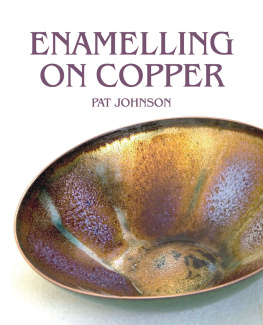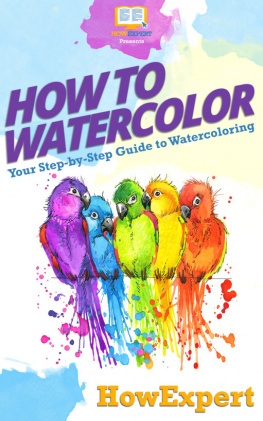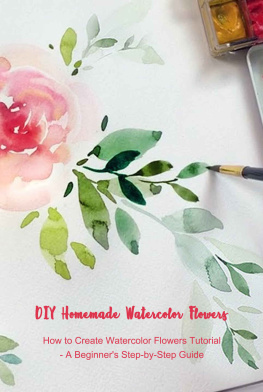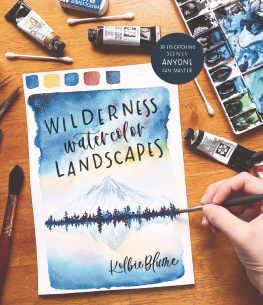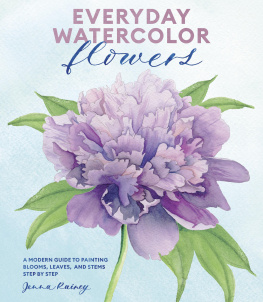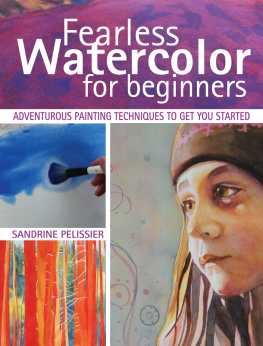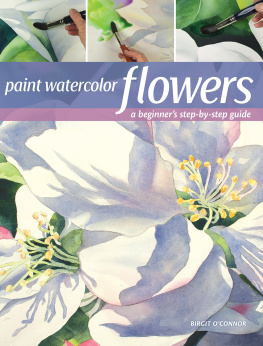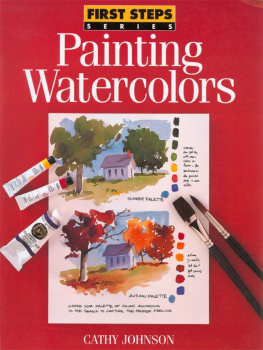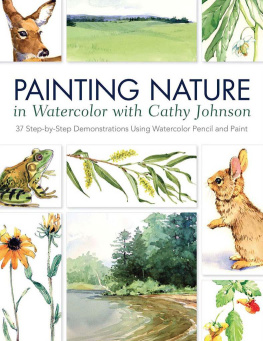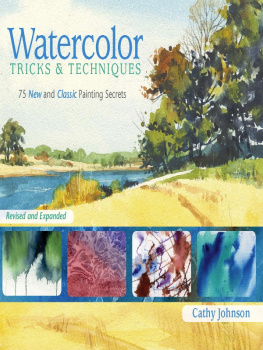Thank you for purchasing this Artist Network eBook.
Sign up for our newsletter and receive special offers, access to free content, and information on the latest new releases and must-have art resources! Plus, receive a coupon code to use on your first purchase from NorthLightShop.com for signing up.
or visit us online to sign up at
http://artistsnetwork.com/ebook-promo
LIGHTHOUSE NEAR PORT CLYDE, MAINE
Watercolor pencil and ink on Strathmore vellum drawing paper
634" 712" (17cm 19cm)
Contents
Introduction
For an artist, working on the spotin nature, en plein air, whatever you want to call itcan be a delight, a wonderful challenge, the ultimate high. And, yes, it is a challengenature sees to that! The changing light alone tests our skill and speed and our powers of observation.
Still, there are so many reasons to work outdoors: to drink in the beauty of nature; to find fresh, evocative, inspiring and challenging subjects; to spend time in the quiet places; to capture the liveliness of birds or the grace of a red fox; to learn about your environment; to perfect your skill; and just to be out where its achingly beautiful. Whether you take a painting vacation, a field trip led by a naturalist/artist, or a trip to some exotic, untouched locale, or you find painting subjects virtually in your own backyard, you will find subjects enough for a lifetime.
Of course, it isnt necessary to complete a whole painting outdoors. You may prefer to sketch a variety of subjects with pencil, ink, colored or watercolor pencils, even mixed media with quick watercolor washes, then return to the comforts of home to do a more finished piece. You can take photos, both from a distance and close up. Ill show you how to put these resources to work!
Well discuss the various mediums and try out the techniques together, and Ill offer some of my favorite quick tips and hints for capturing textures. Well cover some of the basics, but also explore more specific and advanced techniques.
This book is organized by habitat. Each chapter includes the variety of things you will find in that specific habitat and hints on how best to capture these elements in your sketches and watercolors. The forest habitat chapter, for instance, will show you how to capture individual tree shapes, bark patterns and leaves as well as forests from a distance and in their varied seasons. Youll also learn to paint the wildflowers that bloom in the spring and the birds, insects and animals that frequent these places.
There is a bit of the naturalist in most of us. Painting and drawing this marvelous place we inhabit allows us to slow down and learn with our own eyes, to notice, to pay attention. The child within is still curious about that big moth or the tiny, brightly colored mushroom that grows along a fallen log. How better to explore than to observe and draw or paint?
Perhaps Baba Ram Dass was not thinking of artists when he said, Be here, now, but that injunction certainly applies to painting in nature. We look, we see, we pay attention, we learn and we delight in it!
Whether you love an aromatic, crackling campfire, a mountain stream, the robust wildflowers of summer or the calligraphy of tracks in the snow; whether you find time for canoeing, fishing in the early morning, watching the birds that frequent your locale or stealing silently almost within touching distance of a deer and her fawn, you will find magic in this natural world. As an artist, getting it down in concrete form is to capture those moments forever, golden as a fly in amber. Your paintings and sketches will have the power to return you to that moment in time. No matter how busy and frenetic your everyday life, these tangible evidences of time in nature will transport you back to those magical moments.
What You Need
Surface
Arches hot-pressed watercolor paper
dark toned pastel paper
Fabriano cold-pressed watercolor block
Fabriano cold-pressed watercolor paper
Fabriano hot-pressed watercolor paper
Strathmore cold-pressed watercolor block
Strathmore cold-pressed watercolor paper
Strathmore rough watercolor paper
toned warm tan drawing paper
Watercolors
Winsor & Newton unless otherwise noted:
Burnt Sienna, Cadmium Red Medium Hue [Daniel Smith], Cadmium Yellow Medium Hue [Daniel Smith], Cobalt Blue, Dragons Blood [Maimeri Blu], Hermatite Burnt Scarlet [Daniel Smith], Manganese Blue Hue, Minnesota Pipestone [Daniel Smith], Olive Green, Paynes Gray, Permanent Alizarin Crimson, Phthalo Blue [Daniel Smith], Quinacridone Burnt Scarlet [Daniel Smith], Quinacridone Gold, Raw Sienna, Sedona Genuine [Daniel Smith], Titanium White, Transparent Yellow, Ultramarine Blue [Daniel Smith], Vivianite (Blue Ochre) [Daniel Smith], Yellow Ochre
Watercolor Pencils
Derwent Inktense unless otherwise noted:
Blue Grey. Burnt Sienna, Burnt Umber, Burnt Yellow Ochre, Chinese White, Cobalt Blue, Deep Vermilion, Indigo, Ivory Black, Juniper Green, Olive Green, Oriental Blue, Pale Vermilion, Prussian Blue, Sage [Derwent Graphitint], Ultramarine, Venetian Red
Brushes
12-inch (13mm), 34-inch (19mm)1-inch (25mm), 2-inch (51mm) flats
nos. 3, 5, 6, 7, 8, 10 rounds
12mm flat Niji waterbrush
9mm, 12mm, 15mm round Niji waterbrushes
aquarelle brush
barbered fan brush
bristle brush
small inexpensive brush for masking fluid
stencil brush
Other Supplies
black colored pencil, brush-tipped pens in shades of gray, craft knife, fine-point pen, fine-tipped marker, gouache paint, graphite pencil, HB pencil, India rubber, indigo colored pencil, liquid mask, Lyra Aquacolor watercolor crayons, masking fluid, mechanical pencil, natural sponge, old bamboo pen, pale colored pencil, palette knife, paper towels, pencil, sharp knife, sharpened stick, sunset-colored watercolor pencil, tissues, Tuscan Red colored pencil
CHAPTER ONE
MATERIALS AND SUPPLIES
What to buy, what to try: The supplies you end up using depend a lot on whether you want to work en plein air or in the comfort of your studio. Well touch on both options. It also depends on how much you want to spend, and whether you like to work as simply as possible or have all the bells and whistles at your disposal. I tend toward the simpler model these days, but I have indeed tried out many other options on my way, so well discuss the possibilities there, too.
Just remembertheres no right way. What is important is finding the tools that allow you to work the way you want to and capture what you want! That means that some exploration is in order.


